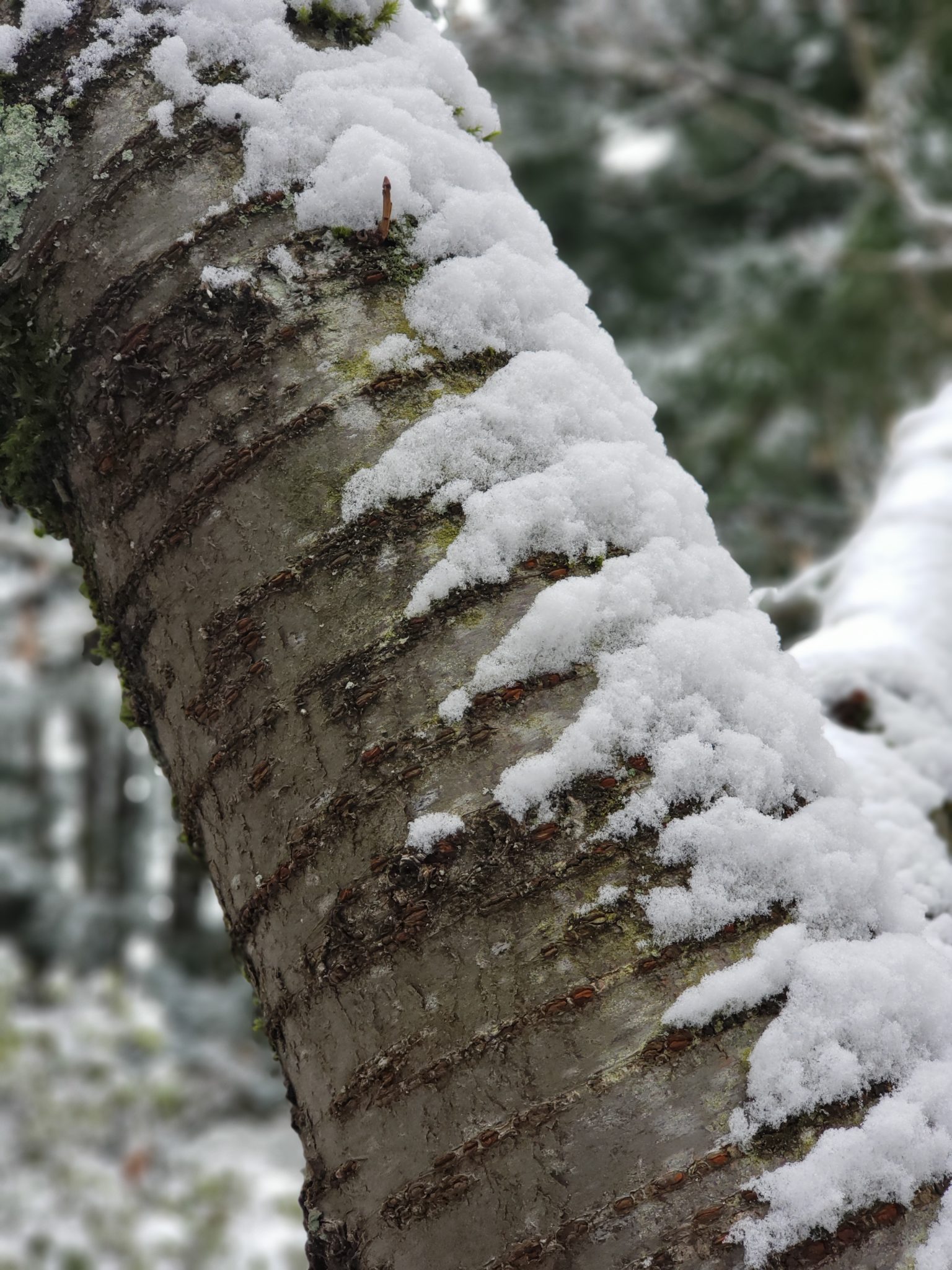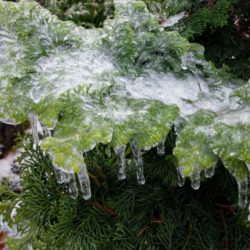
Why Don’t Trees Freeze?
Outdoor winter temperatures in the Portland area regularly fall below the fresh water freezing temperature of 32 degrees Fahrenheit. Although we can generate our own heat by burning calories, without the protection of warm clothes or shelter, we would not survive freezing temperatures for long. Plant cells are made of mostly water. As cellular water freezes, it expands, bursting plant cell walls. Plant cells that burst from freezing die. Trees do not have warm winter coats and cannot move to a warmer place, but frost damage in trees is very rare in the Portland area. How do trees survive winter without freezing?
Life Cycle of Herbaceous Annuals and Perennials
Herbaceous annuals, like tomatoes and sunflowers, complete their life cycle in one growing season when they produce seed and therefore do not need to survive winter. After a freeze and thaw, the annual plants lose their rigidity, turn dark brown, and fall over into a wet mass because their cells have burst. Herbaceous perennials, which live for more than two years, die back to the ground after a freeze, but their roots survive the winter underground and the plants regrow in the spring.

Life Cycle of Trees
Trees have a different approach. Their life cycle is not over after one growing season. Many trees grow for several years before reaching reproductive maturity. Douglas-fir trees produce seeds for the first time around year 7 and do not reach maximum seed production until they are around 200 years old.

Because trees’ above-ground living tissues endure through the winter every year, they can grow taller each year by building on previous years’ growth. This is an important success strategy of woody plants seeking sunlight in a forested canopy. These above-ground tissues in the woody stems do not freeze in the winter because trees have special mechanisms to prevent their cells from freezing. The needles of evergreen trees do not freeze in winter because of their high resin content. The roots of trees do not freeze because they are insulated by the soil.

Dormancy Onset in Trees
We discussed in detail dormancy onset as a winter weather survival mechanism in our article “Dormancy Onset In Trees.” There are several mechanisms that occur in dormancy onset to protect soft tissues from freezing temperatures. Sugars are stored, deciduous leaves are discarded, and plant cells are dehydrated. Cellular dehydration is the key mechanism that prevents above-ground living plants cells in the stem from freezing.

Cellular Dehydration
At the height of Portland summer, when the northern hemisphere is tilted toward the sun, our trees receive the most intense sunlight for the longest period of the day. The leaves convert this sunlight energy into usable energy in the form of sugar. As summer progresses into fall and the northern hemisphere tilts away from the sun, we enjoy fewer hours of sunlight every day. The reliable shortening days trigger the trees to prepare for winter, not variable cooling temperatures.
The first step in the preparation process is that the living cell walls become more permeable. Water is moved out of the cell through these more permeable walls. A concentrated slurry of sugars, proteins, and acids is left behind in the cell. The freezing point of this syrupy mixture is much lower than the more dilute mixture of summer plant cells.
The water that was moved out of the plant cells is now between the plant cells. This water is so pure that there are no nucleation sites on which the ice crystal pattern can build. This pure water can therefore be subjected to temperatures lower than the freezing temperature of water without freezing. Even if the water between the plant cells freezes, the tree can still live as long as the plant cells do not freeze.

Tree Hardiness Zones
Cold tolerance varies widely among tree species. Cellular dehydration helps determine a tree’s USDA plant hardiness zone, an indication of where each tree is expected to thrive. In the Portland area USDA plant hardiness zone 8b, our trees are expected to be exposed to minimum winter temperatures of 15-20 degrees Fahrenheit. When choosing tree species to plant in our Portland area, choose species with genetics that allow them to survive these temperatures without frost damage.


